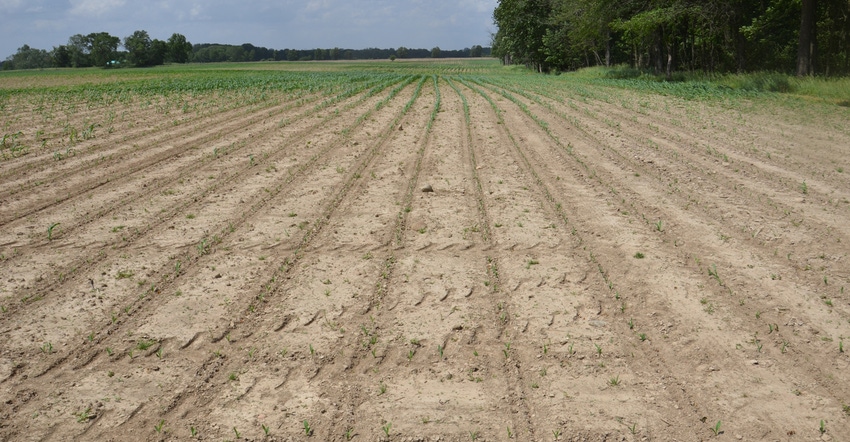
Fact: There will be a “wrong” day to plant corn every year. Fact: You won’t know when that day is until after you’ve planted. Fact: You can use weather clues to improve your odds of avoiding that day, but there is no foolproof way to know for sure.
These three facts relate to a frustrating part of farming — avoiding those days that turn out to be poor days to plant. Whether it’s corn or soybeans, crops may not emerge properly.
“Growers know there will likely be at least one wrong day to plant every year, but sometimes you can’t avoid it,” says Dave Nanda, director of genetics for Seed Genetics Direct, sponsor of Corn Watch �’20.
The wrong days to plant may vary by location, depending upon weather patterns. In central Indiana this year, May 15, 16 and 17 turned out to be poor days to plant. The Corn Watch ’20 field, located in that geography, was planted on the edge of that window, late on May 13.
Rain showers, cooler weather and some heavy rain set in during and after May 15 to 17. Many fields planted on those day, especially cornfields, came up unevenly. Some growers elected to spot-in areas later where stands were thinnest. Crop insurance adjustors report several fields were replanted.
The problem is, when it’s mid-May and you know the weather forecast is only marginally accurate, it’s hard to let the planter sit and watch potential planting days slip off the calendar, Nanda acknowledges.
Other experiences
Four years ago, planting April 27 turned out to cause headaches. The following year, it was April 22. In both cases, heavy rains set in, and it stayed wet for several days. Especially in 2016, besides turning wet, it also turned unseasonably cool and stayed that way for several days.
Even if you know rain or cool weather is in the forecast, Nanda says, it’s difficult, if not impossible, to judge how long the wet and/or cool period will last. Sometimes systems stall out and last longer than weather forecasters expected. Despite advances in long-range weather forecasting, there’s no practical way to determine weather patterns for the next couple of weeks with utmost accuracy.
The real irony came in 2019. Over a large part of central and southern Indiana, the wrong day to plant was June 14. Who would have let their planter sit, especially if they still had corn to plant, on June 14? No one!
Because of the unusual 2019 season, people were still planting corn on June 14. What ensued was up to 5 inches of rain over the next few days. In some areas, it rained for 10 consecutive days. When it finally stopped and dried out, most of those fields planted the day before the rain were replanted — both corn and soybeans.
The other factor in 2019, Nanda recalls, was a sharp drop in temperatures to lows around 40 degrees F or below during the first rainy day. Chill injury in mid-June prevented some corn from even germinating.
“You expect that perhaps in April or early May, but not June,” Nanda says. “You can use common sense and watch forecasts, but sometimes you just can’t outguess the weather.”
About the Author(s)
You May Also Like




